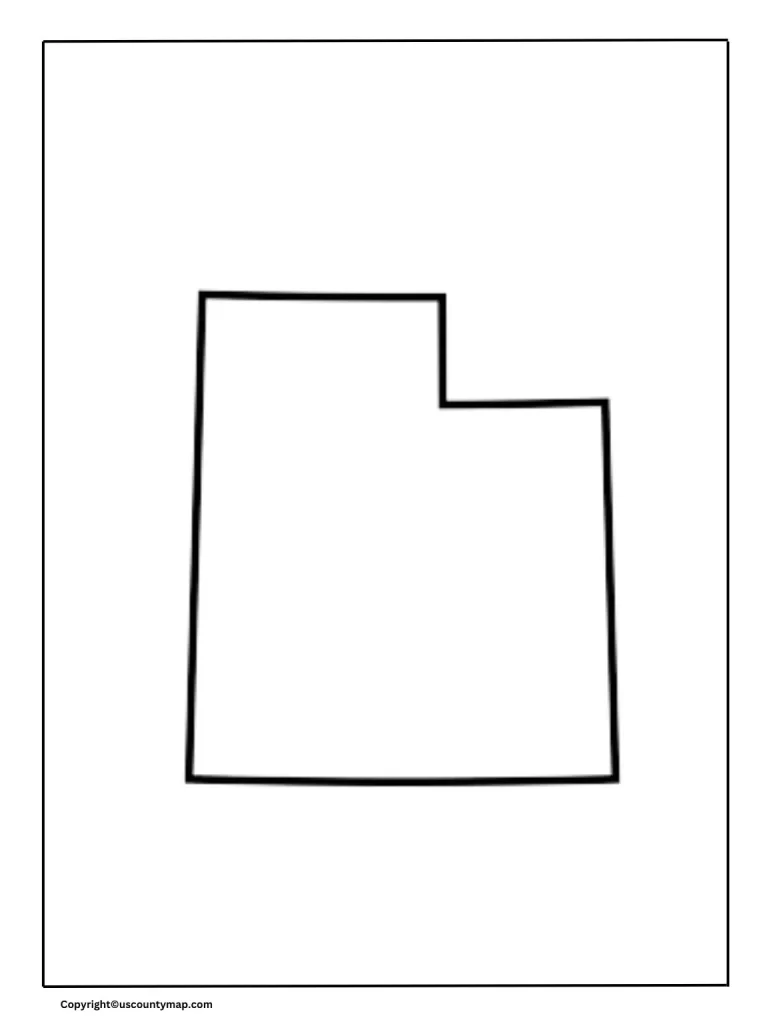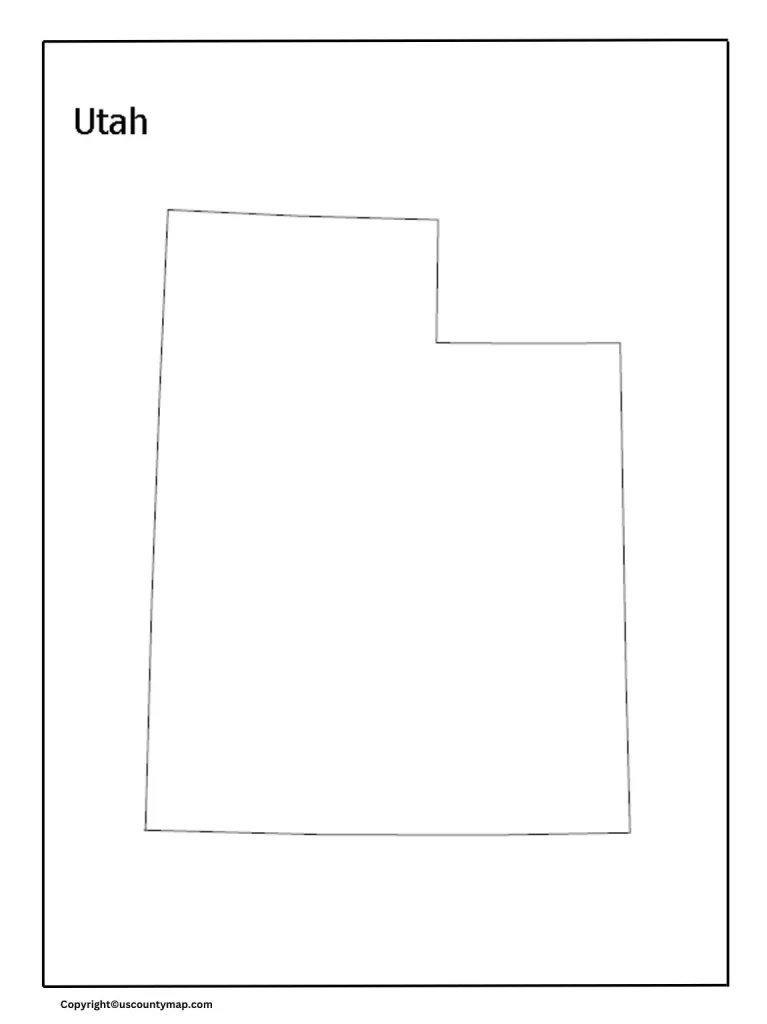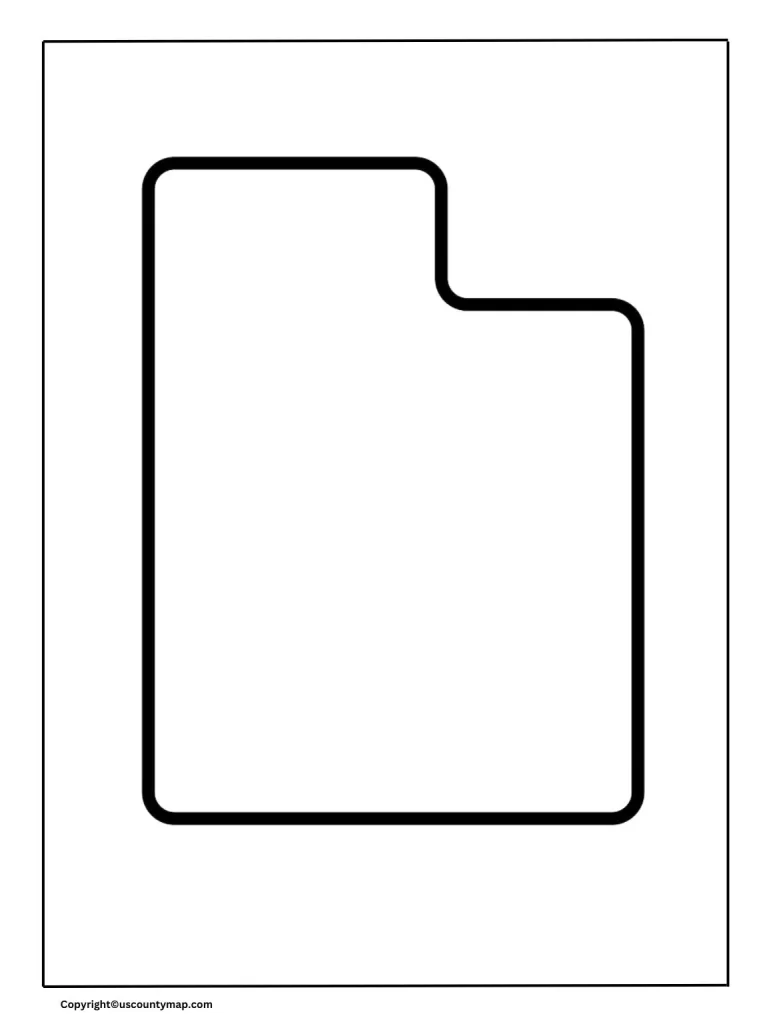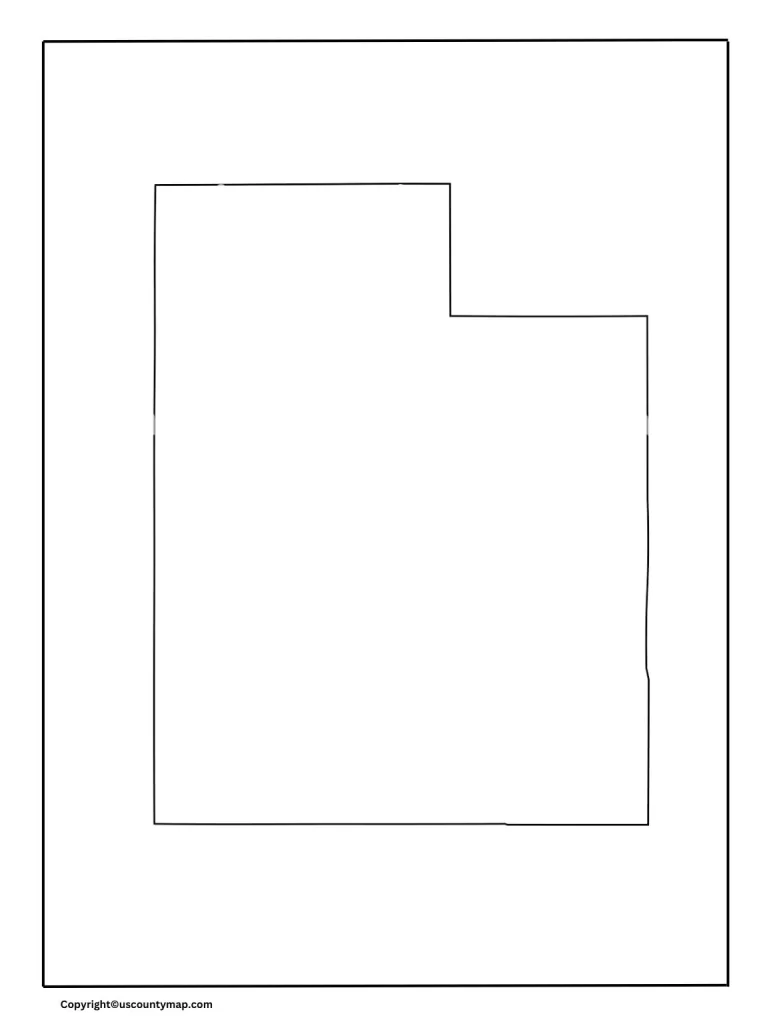Blank Map of Utah – The western United States has a state with Utah, various landscapes, rich cultural heritage and a close meaning of the community. The state shares boundaries with Kolorado in the east, Vyoming in the north -east, Idaho in the north, Nevada in the west and Arizona in the south. The capital and largest city of Utah is Salt Lake City, the cultural and economic center of the state.
Table of Contents
ToggleGeography and Natural Sites:
Utah is surrounded by its magnificent and diverse geography, including:
- Mountains and Jungle: Rocky Mountains and Washech Range cover the northern and central Utah, which has great scope for external entertainment such as skiing, hiking and mountain biking. A part of the Rocky Mountains is Yinta Mountains, the highest point of the state, Kings Peak.
- Plateau and Desert: Southern Utah claims its luxurious desert landscapes and plateaus, which includes notable structures such as Red Rock Cliffs and Canian in the Sion National Park, Brys Canian and Arcus National Park. The Colorado plateau also dominates the region, which produces a specific and incompetent landscape.
- Great Salt Lake: The Great Salt Lake, a major saltwater lake in the Western Hemisphere, is situated in the north of the state. This natural wonder is a remnant of prehistoric Lake Bonneville and is home to millions of birds.
Blank Map of Utah

Climate:
Utah has a semi-arid to desert climate with four well-defined seasons. The climate changes dramatically throughout the state because of its varied topography:
- Northern Utah: The area, including Salt Lake City, has cold, snowy winters and warm, dry summers. The mountains receive heavy snowfall. This rendering it a well-liked location for winter recreation.
- Southern Utah: The southern region of the state is more desert in nature, with hot summers and mild winters. It receives less rainfall than the north and is characterized by clear skies and sunshine.
Printable Map of Utah
Living Places:
Utah provides diverse living status, from urban areas to rural cities:
Urban settlements:
- Salt Lake City: The largest city and state capital, its cultural attraction, is famous for access to lively economy and external recreational activities.
- Provo and Orem: Cities include Provo-Orem Metropolitan Area and Host Brigham Young University. They facilitate a close-bent community and good school facilities.
- Ogden: Located to the north of Salt Lake City, Ogden is recognized for its old city, external entertainment and proximity to the waste mountain.
Suburban Areas:
- Sandy and West Jordan: These are suburban suburbs in the Salt Lake City Metropolitan region, with family -friendly neighborhoods and quality schools and parks.
- St. George: Located in southern Utah, St. George is recognized for the expansion of its light climate, visible Vista and retirement community.
Rural Areas:
- Logan: Located in the Cash Valley, Logan is famous for its Farm History, Utah State University and Stunning Scenes.
- Moab: Eastern Utah has a small town, Moab Arches and the entrance to the Canyonlands National Parks and is a favorite among external courageous people.
Utah Map Outline [Blank Map of Utah]
Forests:
There are many national forests in Utah, each in recreational activities and connects the natural attraction of the state:
- Unta-Wasatch-Cache National Forest: Covering the northern Utah, it includes entertainment sites such as Uinta Mountains, Washech Range and Cash Valley in the forest.
- Dixie National Forest: Located in South-Central Utah, this forest has Red Rock Country, Alpine Trees, and is close to Bryas Canian and Sion National Parks.
- Ashley National Forest: Spread over Northeast Utah, it includes the vivid gorge national entertainment area in the forest and offers fishing, boating and hiking opportunities.
- Fishlak National Forest: Located in Central Utah, it is famous for a series of forest fish lake, pando (the largest organism of the planet by weight), and a series of external activities.
Weather:
Utah’s climate is shaped by its varied terrain and differs widely throughout the state:
- Winter: Northern Utah, particularly the mountain regions, enjoys cold, snowy winters, with ski resorts receiving plenty of snow. Southern Utah has relatively mild winters with some snowfall at higher elevations.
- Spring: Spring in Utah experiences increasing temperatures, open wildflowers, and more outside activities. Spring weather can be unpredictable, with the occasional rainy shower.
- Summer: Summer is warm and arid, particularly in southern Utah, with temperatures well above 100°F (38°C). Summers are warm, though, in northern Utah with lower temperatures up in the mountains.
- Fall: Fall is marked by cooler weather and beautiful autumn color, particularly in the mountains. It’s a favorite time of year to go hiking and outdoor recreation.
Importance of a Blank Map of Utah:
An empty map of Utah is a useful resource for several applications that provide valuable advantage at an educational, commercial and individual level. In this way it can be explained and used:
Educational application:
- Geography Classes: Students can apply an empty map to identify the geography of Utah, such as cities, mountains, rivers and national parks. They can mark these characteristics to solidify their understanding.
- History lessons: Students can place historical sites, important events and original American tribal areas on the map. It helps in understanding the historical significance and heritage of the state.
Travel and Tourism:
- Trip Planning: Passengers can note the routes, note sites, and detect the major attraction using a vacant map. This leads to plan the process program and ensures that they all visit all points of interest.
- National Park Examples: Outdoor recreationists can note trails, campsites and sightseeing in the national parks and forests of Utah, assisting in trip planning and discovery.
Real Estate and Urban Planning:
- Property Identification: Real estate agents can use maps to spot the boundaries of property, areas and potential areas of development. This sound helps in investment decisions and planning.
- Development of infrastructure: The city planners can use maps to plan infrastructure such as roads, schools and public facilities so that they are strategically located for maximum access.
Business Planning:
- Market Analysis: Companies can utilize the map to analyze market regions, locate potential customer segments, and map expansion plans. This geographic analysis assists in making business decisions based on data.
- Logistics and Distribution: Logistics companies can organize efficient routes and distribution channels by mapping geographic points and transportation routes.
Government and Public Services:
- Resource Allocation: The government can use the map in planning the provision of resources and services, e.g., health, education, and emergency. This is a guarantee of equality in distribution within the state.
- Environmental Management: Environmental departments can utilize the map to determine the protected areas, plan conservation programs, and handle natural resources for sustainable management.
Personal Uses:
- Dangers and Family History: Maps can be used by people who can be used to find ancestral homes to research their family history, identify migration routes, and to find historical sites of interest for their heritage.
- Hobbyist Activities: The map can be employed by external enthusiastic people to have hiking trails, hunting areas, fishing holes, and other points of interest, which help in planning and recording their excursions.
Utah Map Worksheet
Utah is a stunning diverse state with breathtaking natural scenes, large -scale diverse communities and a high cultural standard. Its highly differentiated geography, from the huge mountains to the expander desert, also presents a housing for human business along with tremendous recreational value. Utah Blanc Map is an extremely adaptive device that is used in many tasks for educational, work and personal purposes. It helps in understanding the geography of the state, traveling and discovering business undertakings, research, and historical and cultural heritage. Classes, businesses or homes are used, an empty map of Utah is a precious property to imagine and interact with the state in various ways.



